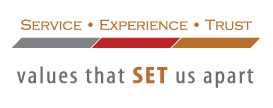There are a lot of factors to consider in this decision and every situation will be unique. A vacuum furnace is a large capital investment and there are other costs associated with setting up in-house that must be taken into account (see our Articles page). You also gain improved turn-around-time and important intangibles such as […]
Is brazing the same as welding?
No. Welding involves the melting of the base metal and may take place with or without a filler metal. Brazing involves the melting and re-solidification of a filler metal to form a joint between two base metal components. There is some diffusion of the filler metal into the base metal during brazing but no melting […]
Can a vacuum furnace be used for both hardening and tempering?
Yes, it can, but there are some issues to consider. A standard vacuum furnace heats its load most effectively at temperatures above 1200°F (650°C), the start of the “red heat” range when radiant heating becomes most efficient. Below 1200°F (650°C), temperature uniformity within the furnace becomes a concern. Tempering operations for many alloys take place […]
HVOF Coating Applications for Modern Gas Turbine Engines
In order to maximize efficiency in modern gas turbine engines, manufacturers have developed methods of obtaining minimal clearance between rotating turbine blade tips and stationary engine casings. One method utilized involves allowing the tips of the turbine blades to wear into a rub tolerant surface on the casing. This ensures that when the blades are fully extended due to centrifugal forces during engine operation, only a minimal leak path will exist for the hot gas across the tips of the blades.
In order to minimize blade tip wear, engine manufacturers are now designing blade tips with wear resistant coatings. VAC AERO has developed an HVOF CoCrAlY coating that fulfills this application.
SiC-Reinforced Aluminum Alloy Coatings Produced by Cold Spray Process
Metal matrix composites are becoming increasingly popular for industrial applications as diverse as aerospace, automotive and electronics. The composites consist of an alloy matrix reinforced with ceramic particles to enhance mechanical properties. Aluminum alloys are especially popular as a matrix material. The addition of relatively inexpensive silicon carbide (SiC) particles to an aluminum alloy matrix improves strength, elasticity, wear resistance and corrosion resistance. These composites are used widely for high performance structural components in aerospace and automotive applications. Current techniques for fabricating the composites include casting, extrusion, powder metallurgy and thermal spray deposition
HVOF Coatings for Chrome Replacement on Landing Gears
Hard chromium plating has traditionally been used on aircraft airframe components to provide corrosion protection and wear resistance. Chromium plating has been identified by governmental regulatory agencies as a health hazard due to the presence of hexavalent chromium within the plating solutions. This has prompted major airframe and landing gear manufacturers to search for alternative processes to chromium plating which do not pose a health threat to the process operators. The leading candidate for hard chromium replacement is tungsten carbide coating applied by the HVOF (High-Velocity Oxygen Fuel) thermal spray process. There are many practical considerations to account for when implementing a change of this magnitude.
Canada is the world’s foremost supplier of landing gears. With the U.S. Environmental Protection Agency imposing stricter limits on the use of hexavalent chromium, and other countries considering similar legislation, efforts are underway to adopt a new coating process. “It’s in everyone’s interest to be ready in time for that legislation,” says IAR project director Dr. Jean-Pierre Immarigeon. “If new technology can be mastered, you can adopt it in advance of the legislation being passed.” The best clean alternative technology being considered by the aerospace industry is a ceramic/metal composite coating applied by High-Velocity Oxy-Fuel (HVOF), a thermal spraying process that is environmentally safer than chrome plating and has the potential for cost and time savings.
Diffusion Brazing Technique for IN738
Transient liquid phase bonding, also known as diffusion brazing, is a metal joining process that produces a high-quality bond through the isothermal solidification of a melting point depressant-rich interlayer. The advantage of using diffusion brazing over conventional processes is that the microstructural properties in the fusion zone are very similar to those of the base metal. The process is broken down into four distinct stages; heating, dissolution, isothermal solidification, and homogenization. The rate-controlling stage of the process is the isothermal solidification stage which may take hours or even days.
Recently, VAC AERO teamed up with researchers from the Mechanical Engineering Department of the University of Waterloo (Waterloo, Ontario) to develop a practical method for diffusion brazing of Inconel 738. This alloy is used extensively in turbine engine hot section components. Brazing techniques are often used to restore these components when they have been damaged in service, but conventional vacuum brazing produces a repair with limited durability.




